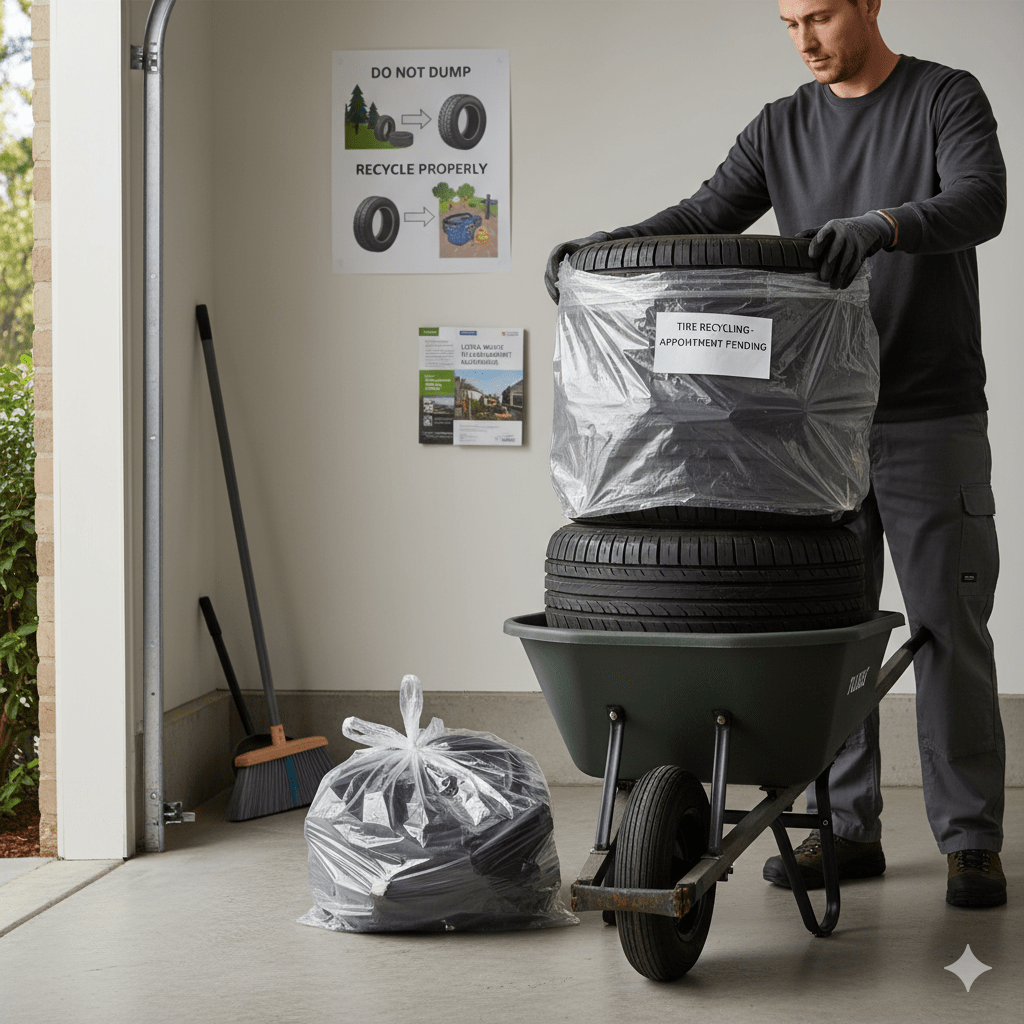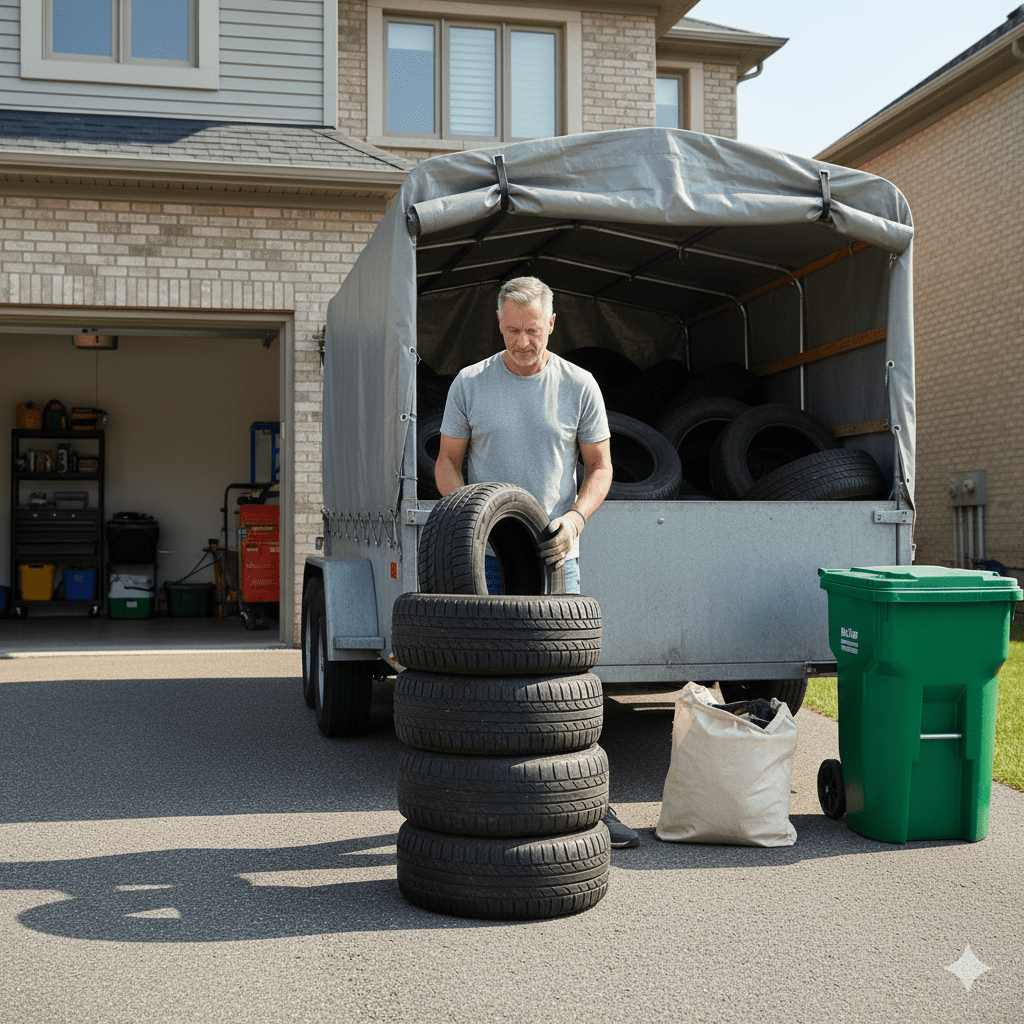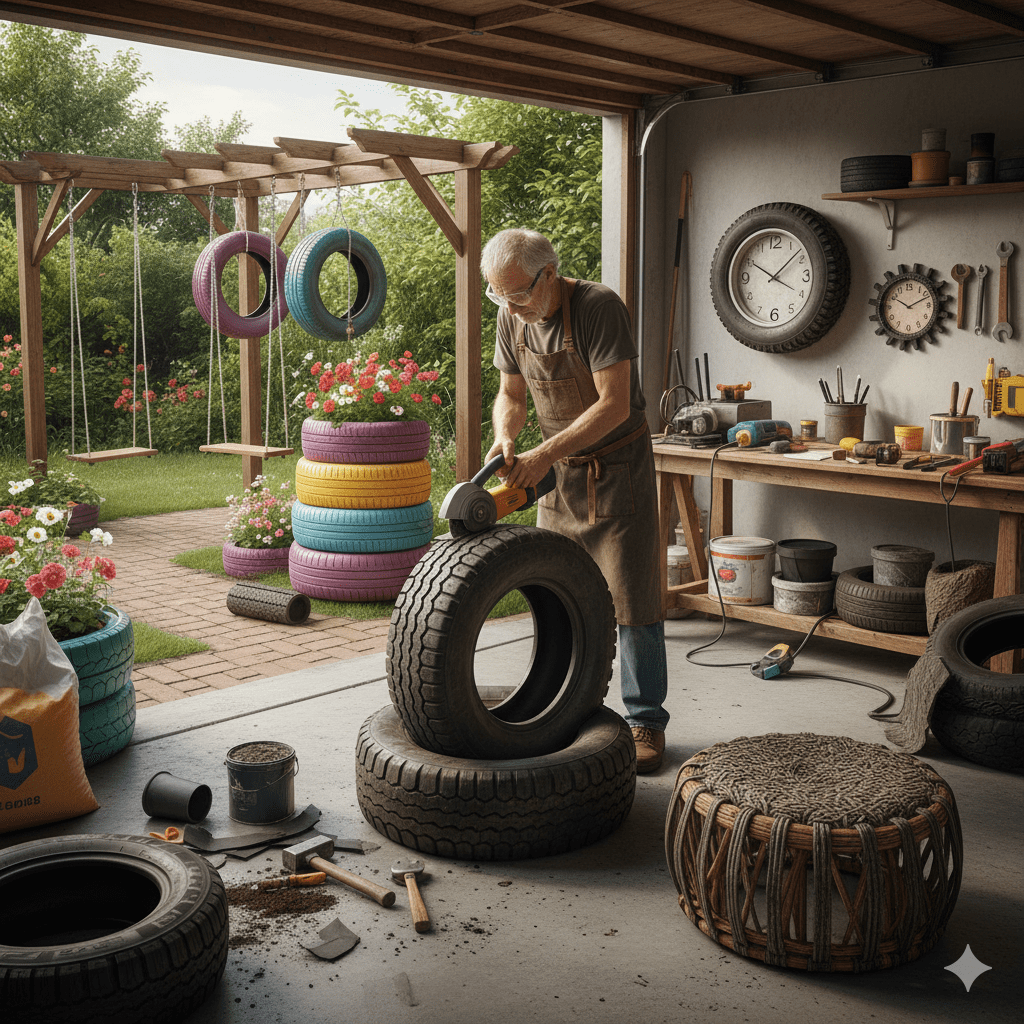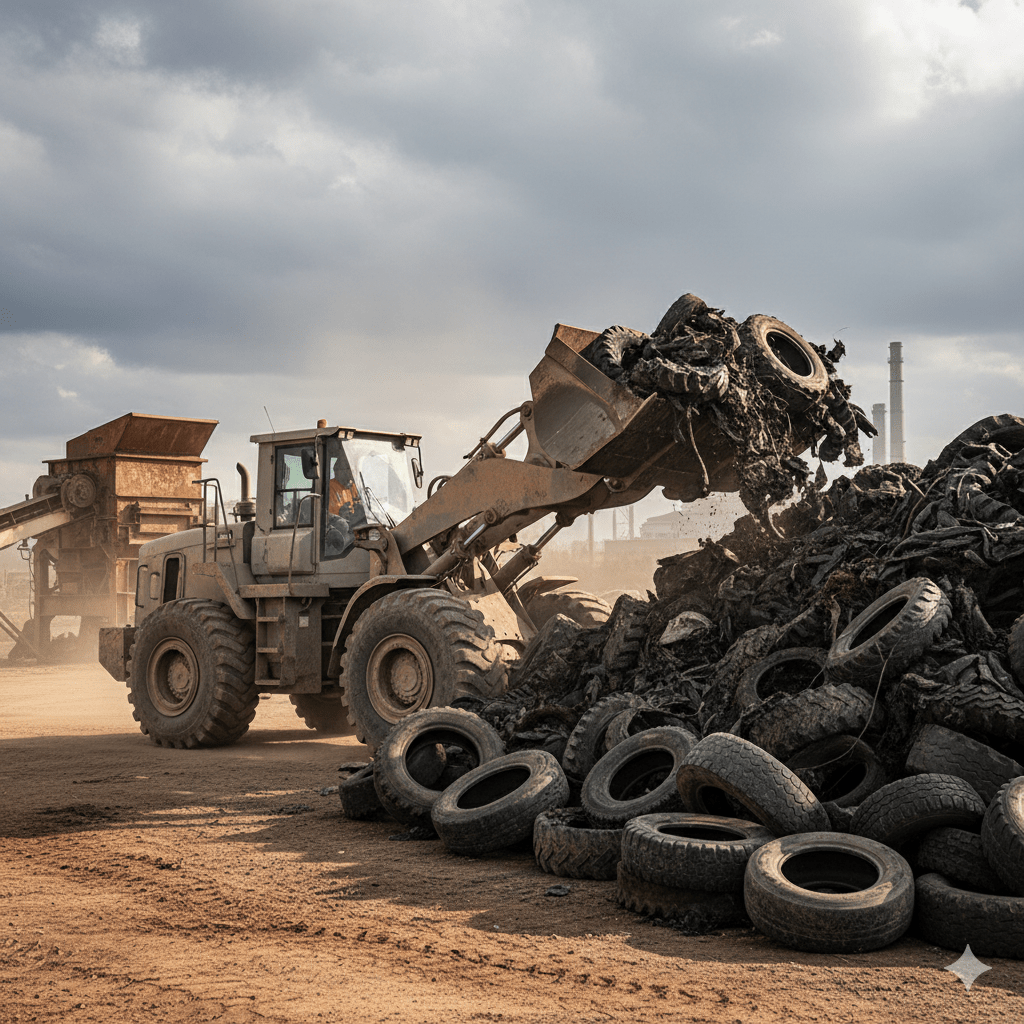Tires are deceptive—harmless until you lift a wet one, stack a few, and battle bead wires or hidden wasp nests. The goal isn’t heroics, it’s control. The best tire removal services know the right moves, respect the hazards, and rely on proven habits to handle the heavy lifting safely and efficiently.
Avoiding Injury When Lifting and Stacking Tires
Your back doesn’t need character; it needs leverage.
- Lift like a lever, not a forklift. Roll the tire onto your shins, squat, grab at 4 and 8 o’clock, and stand by driving through your heels. Keep it close to your body.
- Push > pull. Push stacks across the floor with a tire dolly; pulling twists the spine and hates your rotator cuffs.
- Stack for gravity, not vibes. Alternate orientation (tread-to-tread), 6–8 tires per tier, no leaning towers. Strap each tier before adding the next.
- Mind the wet weight. Rain turns “manageable” into “surprise.” Drain water before moving; a puddle-filled tire adds real pounds.
- Stairs need a plan. Two people, one spotter, stair skids or a ramp. If you wouldn’t carry your friend’s refrigerator that way, don’t carry a tire stack that way either.
Rule: if you have to ask your spine for permission, bring a dolly.
Protecting Against Mold, Chemicals, and Sharp Edges
Most tire piles double as biology experiments and wire porcupines.
- Hands & eyes first. Cut-resistant gloves (A4+), safety glasses. Steel belt wires are acupuncture you didn’t ask for.
- Respirators when it’s funky. Musty piles, cutting/cleaning, or blowing out dust? Wear an N95/P100. Skip leaf blowers indoors—HEPA vac instead.
- Chemicals are not “just junk.” Treat oily residues, solvents, and coolant like hazards. Separate them and use absorbent where needed.
- Respect the bead. Broken beads and exposed wire = snag city. Tape sharp edges or use sidewall covers when sliding by hands.
- Critter check. Rodents, wasps, and spiders adore tire caves. Knock, tip, and look before you lift.
If it smells wrong, looks shiny, or pokes back, slow down and gear up.

Fire Hazards and How to Prevent Them
Tire fires are stubborn, smoky, and expensive. Prevention lives in spacing and common sense.
- No open flames or hot work nearby. Welding, grinding, smoke breaks—take them far away and downwind.
- Keep stacks small and spaced. Short piles (≤ 6 feet), with aisles at least a tire-width between rows. Air gaps slow fire spread and help access.
- Stay dry. Oil-soaked or solvent-exposed rubber is a match with ambitions. Isolate contaminated tires and call a qualified handler if needed.
- Extinguishers on deck. ABC or foam units visible and reachable; everyone knows where they live.
- Housekeeping is suppression. Loose shreds and sidewall cutouts become kindling. Bag them and remove daily.
Fire safety math: fewer, shorter, cleaner piles = dramatically lower risk.
Safe Storage Before Disposal or Pickup
Storage is either a staging area or a problem incubator. Choose staging.
- Ground truth. Store on hard, level surfaces—concrete, asphalt, pallets. Mud equals stuck trucks and twisted ankles.
- Cover smart. Tarp stacks to keep out rain (and mosquitoes) but leave ventilation at base. Trapped heat is a bad hobby.
- Drain water. Punch drain holes in sidewalls of waste tires if allowed; standing water breeds mosquitoes and adds disposal weight.
- Respect load limits. Mezzanines and racking need rated capacities. Rubber is deceptively heavy—check the numbers, not your optimism.
- Access lanes. Keep 10 feet clear for truck approach and a human-wide aisle around stacks. Future-you will applaud.
A clean, dry, accessible yard turns “pickup window” into “pickup happened.”
Following Local Disposal Guidelines to Avoid Fines
The rules exist, and your wallet knows it.
- Whole vs. cut. Some facilities accept whole off-rim tires; others require sidewall cuts or quartering. Call first, cut second.
- On-rim costs more. Demount before drop-off unless your recycler takes on-rim. Bead-locked or filled tires often need special handling—ask.
- Paperwork happens. Licensed haulers, manifests, transporter IDs—keep copies and request scale tickets at drop. Proof beats memory.
- Know the bans. Many landfills prohibit whole tires; mixed loads trigger contaminated fees. Keep tires separate from general debris.
- Event timing. Counties host scrap-tire days with lower fees or limits per household. Show up with ID and a number you can count to.
One phone call to the recycler saves three line items on your invoice—and a fine you didn’t budget for.
Bottom line
Handling and disposing of tires safely is choreography, not heroics: lift with leverage, armor your hands and eyes, treat fire like a math problem, store like a pro, and follow the rulebook before the rulebook follows you. Do that, and the only thing rubber will be supporting is tomorrow’s track—not today’s injuries, pests, or fines.





